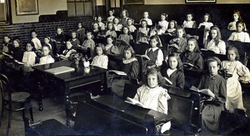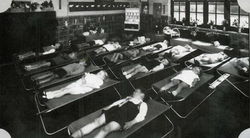Admissions
Ivydale is a local authority maintained school and therefore admissions, excluding those for nursery follow Southwark’s determined admissions criteria. Please follow the link below to their website. The closing date for applications for children due to start primary school in September 2022 is January 15th 2022.
Applications for nursery should be made directly with the school. Please call into the school office to pick up a form. Click on the link below for an outline of our nursery admissions procedure.
We are aiming to hold a mixture of in-person and online prospective parents events during the Autumn term. Dates will be advertised in early September.
Admissions
Ivydale is a local authority maintained school and therefore admissions, excluding those for nursery follow Southwark’s determined admissions criteria. Please follow the link below to their website. The closing date for applications for children due to start primary school in September 2022 is January 15th 2022.
Applications for nursery should be made directly with the school. Please call into the school office to pick up a form. Click on the link below for an outline of our nursery admissions procedure.
We are aiming to hold a mixture of in-person and online prospective parents events during the Autumn term. Dates will be advertised in early September.

A love of learning for life
 |  |
|---|---|
 |  |
 |  |
 |  |
 |  |
 |  |
 |  |
 |
Our History
Ivydale School owes its existence to a combination of local and national factors. Although the hamlet of Nunhead appears in the Domesday Book, its expansion was limited until the mid-Victorian period. The combination of Nunhead's proximity to London, the famous cemetery and the new railway led to the rapid replacement of the area's orchards and fields with rows of terraced houses for which schooling was urgently required for the growing child population.
In the early 19th century education had mainly been provided by two religious societies. However the introduction in 1870 of a national elementary school system, that in turn created the School Board for London, began the creation of local schools. The introduction of compulsory education in 1880 led to plans by the board to set up an elementary school in Nunhead. There were two local private schools but the new Board School catered for the vast majority of children from the Waverley Estate and the new developments.
The Ivydale Road Elementary School opened in 1888 in temporary iron buildings near the current site with 53 children, though this number more than doubled in size within four weeks. Although one school, it comprised two departments, each with its own headteacher: one for boys and one for girls and infants. Almost immediately the buildings proved too small and this, combined with the national introduction of free schooling in 1891, led to the construction of a new building that was finished the same year at the cost of £30,000.
In August 1892 the children and staff moved into the new three story building with the school officially opened in October of that year. Further classrooms were added at a later date - a laundry room for the girls' and a Manual Training Centre for the boys' department. Regular attendance was encouraged by offering outings and medals. The Boys' Department visited Bethnal Green Museum to see Queen Victoria's Jubilee gifts in 1888 and a year later 80 boys visited the Tower of London. The girls do not appear to have been taken on outings.
In class English grammar, dictation, spelling and handwriting were considered important, as was reading. Scripture was taught and an assembly held every day. "Object" lessons - a mixture of science, geography and natural history - were used to extend knowledge and develop language skills. These lessons were planned for a whole department, so topics such as "coal" or "tea" were covered in Standards I and II, while in Standards IV and VII "national" defence", "the barometer" and "roads" were among topics taught. Objects, models, maps and pictures were used to illustrate these lessons.
Infant teaching underwent rapid change with new methods of teaching reading and other areas. Greater emphasis was placed on "constant joyous activity" with the children using play to develop understanding of language skills and number concepts. The juniors gradually moved away from the "3Rs" to include history, geography and practical skills. Needlework was considered important for the girls, who were also taught cookery, laundry and "domestic economy" while boys were taught skills such as woodwork and science.
Classes were very large. In 1892 the school logbooks described how a teacher from that time, Mr Osborne, taught a class of 74 children. Elementary school teachers were poorly paid, with low social status. However a visit by the inspectors repeatedly noted "work of thoroughly good general merit".
In 1913 the school split into three departments, each with its own headteacher: one for boys, one for girls and one for infants. Children attended school from five to fourteen, although it is likely that the "babies class" on the attic floor included children below the age of five. This continued until 1939 when the school was reorganised into infant, junior and senior departments, again each with their own headteacher. However this change was short lived. Later that same year in September 1939 on the outbreak of the Second World War, Ivydale was closed and the children were evacuated. The school was opened again in 1942.